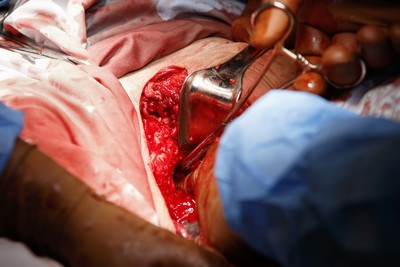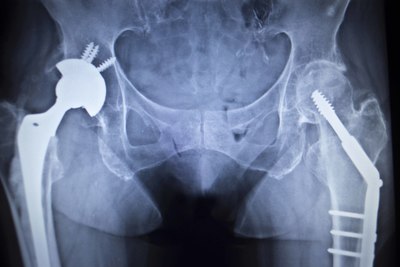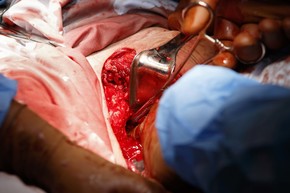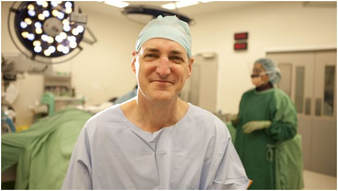Surgery
Please keep in mind while reading the following articles that I did not write them. Let it also be clear that there would be very few families in Australia that has not needed some sort of medical intervention to save the life/lives of our loved ones. On a personal note, I have had four surgeries, and certainly two of them have been of obvious benefit. Furthermore, my life was saved on at least one occasion with medical intervention.
|
"CONFESSIONS OF A SYDNEY SURGEON:"
|
DEATH BY MEDICINE - Gary Null, PhD; Carolyn Dean MD, ND; Martin Feldman, MD; Debora Rasio, MD; and Dorothy Smith, PhD.
"Something is wrong when regulatory agencies pretend that vitamins are dangerous, yet ignore published statistics showing that government-sanctioned medicine is the real hazard. (Null et al 2004)
SEPTEMBER 20, 2013 4:52 PM ET
MARSHALL ALLEN, PROPUBLICA
It seems that every time researchers estimate how often a medical mistake contributes to a hospital patient's death, the numbers come out worse. In 1999, the Institute of Medicine published the famous "To Err Is Human" report, reported that up to 98,000 people a year die because of mistakes in hospitals. The number was initially disputed, but is now widely accepted by doctors and hospital officials. [Reading further will inform why these figures, once disputed, are now so popular]
In 2010, the Office of Inspector General for the Department of Health and Human Services said that bad hospital care contributed to the deaths of 180,000 patients in Medicare alone in a given year – [estimates virtually doubled in an 11 year period]
Now comes a study in the current issue of the Journal of Patient Safety that says the numbers may be much higher — between 210,000 and 440,000 patients each year who go to the hospital for care suffer some type of preventable harm that contributes to their death.
Null and Dean et al 2003, states that natural medicine is under siege, as pharmaceutical company lobbyists urge lawmakers to deprive Americans of the benefits of dietary supplements. Drug-company front groups have launched slanderous media campaigns to discredit the value of healthy lifestyles. The FDA continues to interfere with those who offer natural products that compete with prescription drugs.
These attacks against natural medicine obscure a lethal problem that until now was buried in thousands of pages of scientific text. In response to these baseless challenges to natural medicine, the Nutrition Institute of America commissioned an independent review of the quality of "government-approved" medicine. The startling findings from this meticulous study indicate that conventional medicine is "the leading cause of death" in the United States.
The Nutrition Institute of America is a nonprofit organization that has sponsored independent research for the past 30 years. To support its bold claim that conventional medicine is America's number-one killer, the Nutritional Institute of America mandated that every "count" in this "indictment" of US medicine be validated by published, peer-reviewed scientific studies. It is not commonly known that more than 700,000 Americans die each year at the hands of government-sanctioned medicine, while the FDA and other government agencies pretend to protect the public by harassing those who offer safe alternatives.
[Obviously, there is cause for major concern when patients die unnecessarily. However, let us also be clear that many of these patients would have died without medical intervention as well. Making it impossible to lay the blame for 700,000 deaths totally at the hands of doctors - Editor]
A definitive review of medical peer-reviewed journals and government health statistics shows that American medicine frequently causes more harm than good, with approximately 2.2 million US hospital patients experiencing adverse drug reactions (ADRs) to prescribed medications in a one year period.(1) In 1995, Dr. Richard Besser of the federal Centers for Disease Control and Prevention (CDC) estimated the number of unnecessary antibiotics prescribed annually for viral infections to be 20 million; in 2003, Dr. Besser spoke in terms of tens of millions of unnecessary antibiotics prescribed annually.(2, 2a) Approximately 7.5 million unnecessary medical and surgical procedures are performed annually in the US,(3) while approximately 8.9 million Americans are hospitalized unnecessarily.(4)
The estimated total number of iatrogenic deaths--that is, deaths induced inadvertently by a physician or surgeon or by medical treatment or diagnostic procedures-- in the US annually is 783,936. It is evident that the American medical system is itself the leading cause of death and injury in the US. By comparison, approximately 699,697 Americans died of heart in 2001, while 553,251 died of cancer.(5)
REFERENCES
1. Lazarou J, Pomeranz B, Corey P. Incidence of adverse drug reactions in hospitalized patients. JAMA. 1998;279:1200-1205.
2. http://www.cdc.gov/drugresistance/community/
3. Calculations detailed in Unnecessary Surgical Procedures section, from two sources: (13) http://hcup.ahrq.gov/HCUPnet.asp (see Instant Tables: 2001 prerun tables: most common procedures) and (71) US Congressional House Subcommittee Oversight Investigation. Cost and Quality of Health Care: Unnecessary Surgery. Washington, DC: Government Printing Office, 1976.
4. Calculations from four sources, see Unnecessary Hospitalization section: (13) http://hcup.ahrq.gov/HCUPnet.asp (see Instant Tables: 2001 prerun tables: most common diagnoses) and (93) Siu AL, Sonnenberg FA, Manning WG, Goldberg GA, Bloomfield ES, Newhouse JP, Brook RH. Inappropriate use of hospitals in a randomized trial of health insurance plans. NEJM. 1986 Nov 13;315(20):1259-66. and (94) Siu AL, Manning WG, Benjamin B. Patient, provider and hospital characteristics associated with inappropriate hospitalization. Am J Public Health. 1990 Oct;80(10):1253-6. and (95) Eriksen BO, Kristiansen IS, Nord E, Pape JF, Almdahl SM, Hensrud A, Jaeger S. The cost of inappropriate admissions: a study of health benefits and resource utilization in a department of internal medicine. J Intern Med. 1999 Oct;246(4):379-87.
5. National Vital Statistics Reports. Vol. 51, No. 5, March 14, 2003
"Something is wrong when regulatory agencies pretend that vitamins are dangerous, yet ignore published statistics showing that government-sanctioned medicine is the real hazard. (Null et al 2004)
SEPTEMBER 20, 2013 4:52 PM ET
MARSHALL ALLEN, PROPUBLICA
It seems that every time researchers estimate how often a medical mistake contributes to a hospital patient's death, the numbers come out worse. In 1999, the Institute of Medicine published the famous "To Err Is Human" report, reported that up to 98,000 people a year die because of mistakes in hospitals. The number was initially disputed, but is now widely accepted by doctors and hospital officials. [Reading further will inform why these figures, once disputed, are now so popular]
In 2010, the Office of Inspector General for the Department of Health and Human Services said that bad hospital care contributed to the deaths of 180,000 patients in Medicare alone in a given year – [estimates virtually doubled in an 11 year period]
Now comes a study in the current issue of the Journal of Patient Safety that says the numbers may be much higher — between 210,000 and 440,000 patients each year who go to the hospital for care suffer some type of preventable harm that contributes to their death.
Null and Dean et al 2003, states that natural medicine is under siege, as pharmaceutical company lobbyists urge lawmakers to deprive Americans of the benefits of dietary supplements. Drug-company front groups have launched slanderous media campaigns to discredit the value of healthy lifestyles. The FDA continues to interfere with those who offer natural products that compete with prescription drugs.
These attacks against natural medicine obscure a lethal problem that until now was buried in thousands of pages of scientific text. In response to these baseless challenges to natural medicine, the Nutrition Institute of America commissioned an independent review of the quality of "government-approved" medicine. The startling findings from this meticulous study indicate that conventional medicine is "the leading cause of death" in the United States.
The Nutrition Institute of America is a nonprofit organization that has sponsored independent research for the past 30 years. To support its bold claim that conventional medicine is America's number-one killer, the Nutritional Institute of America mandated that every "count" in this "indictment" of US medicine be validated by published, peer-reviewed scientific studies. It is not commonly known that more than 700,000 Americans die each year at the hands of government-sanctioned medicine, while the FDA and other government agencies pretend to protect the public by harassing those who offer safe alternatives.
[Obviously, there is cause for major concern when patients die unnecessarily. However, let us also be clear that many of these patients would have died without medical intervention as well. Making it impossible to lay the blame for 700,000 deaths totally at the hands of doctors - Editor]
A definitive review of medical peer-reviewed journals and government health statistics shows that American medicine frequently causes more harm than good, with approximately 2.2 million US hospital patients experiencing adverse drug reactions (ADRs) to prescribed medications in a one year period.(1) In 1995, Dr. Richard Besser of the federal Centers for Disease Control and Prevention (CDC) estimated the number of unnecessary antibiotics prescribed annually for viral infections to be 20 million; in 2003, Dr. Besser spoke in terms of tens of millions of unnecessary antibiotics prescribed annually.(2, 2a) Approximately 7.5 million unnecessary medical and surgical procedures are performed annually in the US,(3) while approximately 8.9 million Americans are hospitalized unnecessarily.(4)
The estimated total number of iatrogenic deaths--that is, deaths induced inadvertently by a physician or surgeon or by medical treatment or diagnostic procedures-- in the US annually is 783,936. It is evident that the American medical system is itself the leading cause of death and injury in the US. By comparison, approximately 699,697 Americans died of heart in 2001, while 553,251 died of cancer.(5)
REFERENCES
1. Lazarou J, Pomeranz B, Corey P. Incidence of adverse drug reactions in hospitalized patients. JAMA. 1998;279:1200-1205.
2. http://www.cdc.gov/drugresistance/community/
3. Calculations detailed in Unnecessary Surgical Procedures section, from two sources: (13) http://hcup.ahrq.gov/HCUPnet.asp (see Instant Tables: 2001 prerun tables: most common procedures) and (71) US Congressional House Subcommittee Oversight Investigation. Cost and Quality of Health Care: Unnecessary Surgery. Washington, DC: Government Printing Office, 1976.
4. Calculations from four sources, see Unnecessary Hospitalization section: (13) http://hcup.ahrq.gov/HCUPnet.asp (see Instant Tables: 2001 prerun tables: most common diagnoses) and (93) Siu AL, Sonnenberg FA, Manning WG, Goldberg GA, Bloomfield ES, Newhouse JP, Brook RH. Inappropriate use of hospitals in a randomized trial of health insurance plans. NEJM. 1986 Nov 13;315(20):1259-66. and (94) Siu AL, Manning WG, Benjamin B. Patient, provider and hospital characteristics associated with inappropriate hospitalization. Am J Public Health. 1990 Oct;80(10):1253-6. and (95) Eriksen BO, Kristiansen IS, Nord E, Pape JF, Almdahl SM, Hensrud A, Jaeger S. The cost of inappropriate admissions: a study of health benefits and resource utilization in a department of internal medicine. J Intern Med. 1999 Oct;246(4):379-87.
5. National Vital Statistics Reports. Vol. 51, No. 5, March 14, 2003

Highly invasive spinal procedures:
These invasive procedures increased by 1500% between the years 2002 - 2007 - Further, these more complex, invasive procedures for lower back pain result in fewer benefits to the patient.
http://jama.jamanetwork.com/article.aspx?articleid=185630
PLEASE - no surgery on Friday or on the Weekend.
"Compared with Monday, the adjusted odds of death [taking into account case mix] for all elective surgical procedures was 44% higher, and 82% higher, if the procedures were carried out on Friday or at the weekend respectively," according to the team, which was led by Paul Aylin, a clinical reader in epidemiology and public health at Imperial College London.
Dangerous: Surgery risks can outweigh benefits.
More than one in 10 deaths during or after surgery involved flawed care or serious injury caused by the treatment, a national audit has found. The Australian and New Zealand Audits of Surgical Mortality shows delays in treatment or decisions by surgeons to perform futile surgeries are still the most common problems linked to surgical deaths.
[Repeating what was said at the start of this page - Certainly, it is clear from the amount of research being presented over the last 15 years that patients are advised to take more responsibility for their health. If patients pressure doctors into presenting a quick fix to their health complaints, then there is a greater scope for error, culminating in unnecessary medications and surgeries.
May I suggest we take a leading from the American Academy of Neurology, which is to pursue all conservative therapies before resorting to surgery. It is almost certain, and in fact understated that the amount of injury and death reported on this page by various Government agencies, and Peer Reviewed Medical Journals is correct. If it was not correct, we can be assured there would be a plethora of lawsuits being brought against these researchers, medical journals and doctors. Nonetheless, it must also be remembered that many of these people that died of mistakes, would have died without treatment.
The take home message here would be to approach habitual drug use and surgery as a last resort only. As a therapist that concentrates on alleviating neuromuscular pain, it is my aim to limit unnecessary risk.]
These invasive procedures increased by 1500% between the years 2002 - 2007 - Further, these more complex, invasive procedures for lower back pain result in fewer benefits to the patient.
http://jama.jamanetwork.com/article.aspx?articleid=185630
PLEASE - no surgery on Friday or on the Weekend.
"Compared with Monday, the adjusted odds of death [taking into account case mix] for all elective surgical procedures was 44% higher, and 82% higher, if the procedures were carried out on Friday or at the weekend respectively," according to the team, which was led by Paul Aylin, a clinical reader in epidemiology and public health at Imperial College London.
Dangerous: Surgery risks can outweigh benefits.
More than one in 10 deaths during or after surgery involved flawed care or serious injury caused by the treatment, a national audit has found. The Australian and New Zealand Audits of Surgical Mortality shows delays in treatment or decisions by surgeons to perform futile surgeries are still the most common problems linked to surgical deaths.
[Repeating what was said at the start of this page - Certainly, it is clear from the amount of research being presented over the last 15 years that patients are advised to take more responsibility for their health. If patients pressure doctors into presenting a quick fix to their health complaints, then there is a greater scope for error, culminating in unnecessary medications and surgeries.
May I suggest we take a leading from the American Academy of Neurology, which is to pursue all conservative therapies before resorting to surgery. It is almost certain, and in fact understated that the amount of injury and death reported on this page by various Government agencies, and Peer Reviewed Medical Journals is correct. If it was not correct, we can be assured there would be a plethora of lawsuits being brought against these researchers, medical journals and doctors. Nonetheless, it must also be remembered that many of these people that died of mistakes, would have died without treatment.
The take home message here would be to approach habitual drug use and surgery as a last resort only. As a therapist that concentrates on alleviating neuromuscular pain, it is my aim to limit unnecessary risk.]




